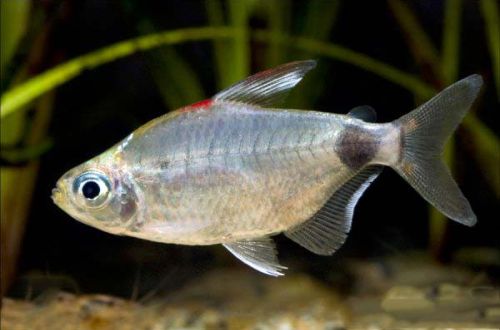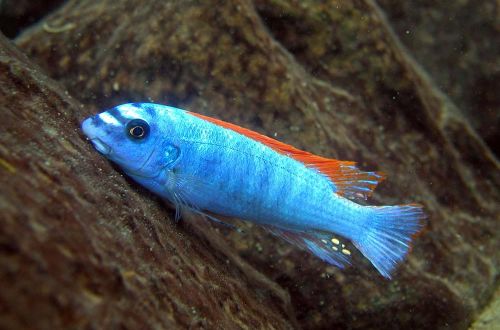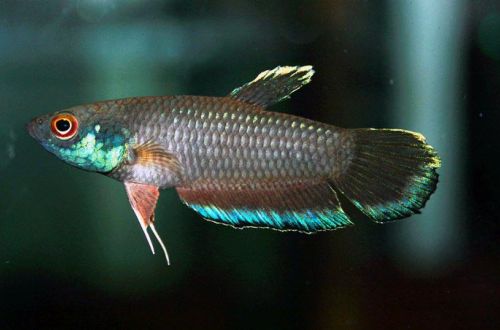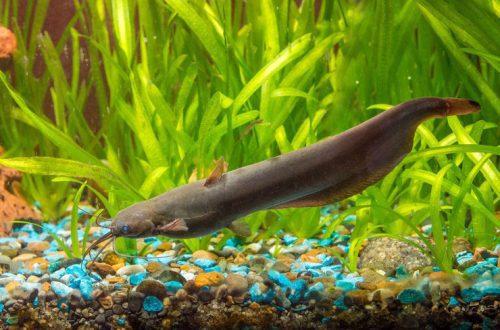
Tetra Brussegheim
Bruceghheim’s tetra, scientific name Bathyaethiops breuseghemi, belongs to the family Alestidae (African tetras). The fish comes from the African continent, where it is found in the lower basin of the Congo River in the territory of the modern Democratic Republic of the Congo. Inhabits sections of rivers with dense aquatic vegetation and silty substrates.

Description
Adults reach a length of about 7 cm. The fish has a high body with a large head, short translucent fins. The main color is silvery with a characteristic pattern in the form of a large dark spot on the caudal peduncle. On the back, in the region of the dorsal fin, red or orange shades may appear. Sexual dimorphism is weakly expressed. Males and females are practically indistinguishable.
Similar body coloration is shown by another related species, Tetra Altus, which often leads to confusion between the two fish.
Brief information:
- The volume of the aquarium – from 140 liters.
- Temperature – 23-27°C
- pH value – 6.0–7.2
- Water hardness – soft (3–10 dH)
- Substrate type – any dark
- Lighting – subdued
- Brackish water – no
- Water movement is weak
- The size of the fish is about 7 cm.
- Food – any food
- Temperament – peaceful, active
- Keeping in a flock of 5-6 individuals
Maintenance and care, arrangement of the aquarium
The optimal size of the aquarium for a group of 5-6 fish starts from 140 liters. The design uses a large number of aquatic plants, such as anubias and bolbitis, driftwood and soft sandy soil. As a supplement, it is recommended to place the leaves and bark of some trees on the bottom, which, in the process of decomposition, will give the water a chemical composition characteristic of its natural habitat, due to the release of tannins and other substances. Read more in the article “Which tree leaves can be used in an aquarium.”
For long-term maintenance, it is necessary to provide warm, slightly acidic water with low total and carbonate hardness. High water quality (i.e. minimum level of contamination) depends on the regular maintenance of the aquarium and the smooth operation of the filtration system.
Food
If the Brüsegheim Tetra was grown in an artificial environment, and not caught in the wild, then it is probably already accustomed to accepting popular dry food. Supplement to the daily diet will be live or frozen food.
Behavior and Compatibility
Peaceful schooling fish, prefers to be in the company of relatives. Good compatibility is achieved with African tetras and cichlids living in the same region, as well as with other small fish of comparable size and temperament.





